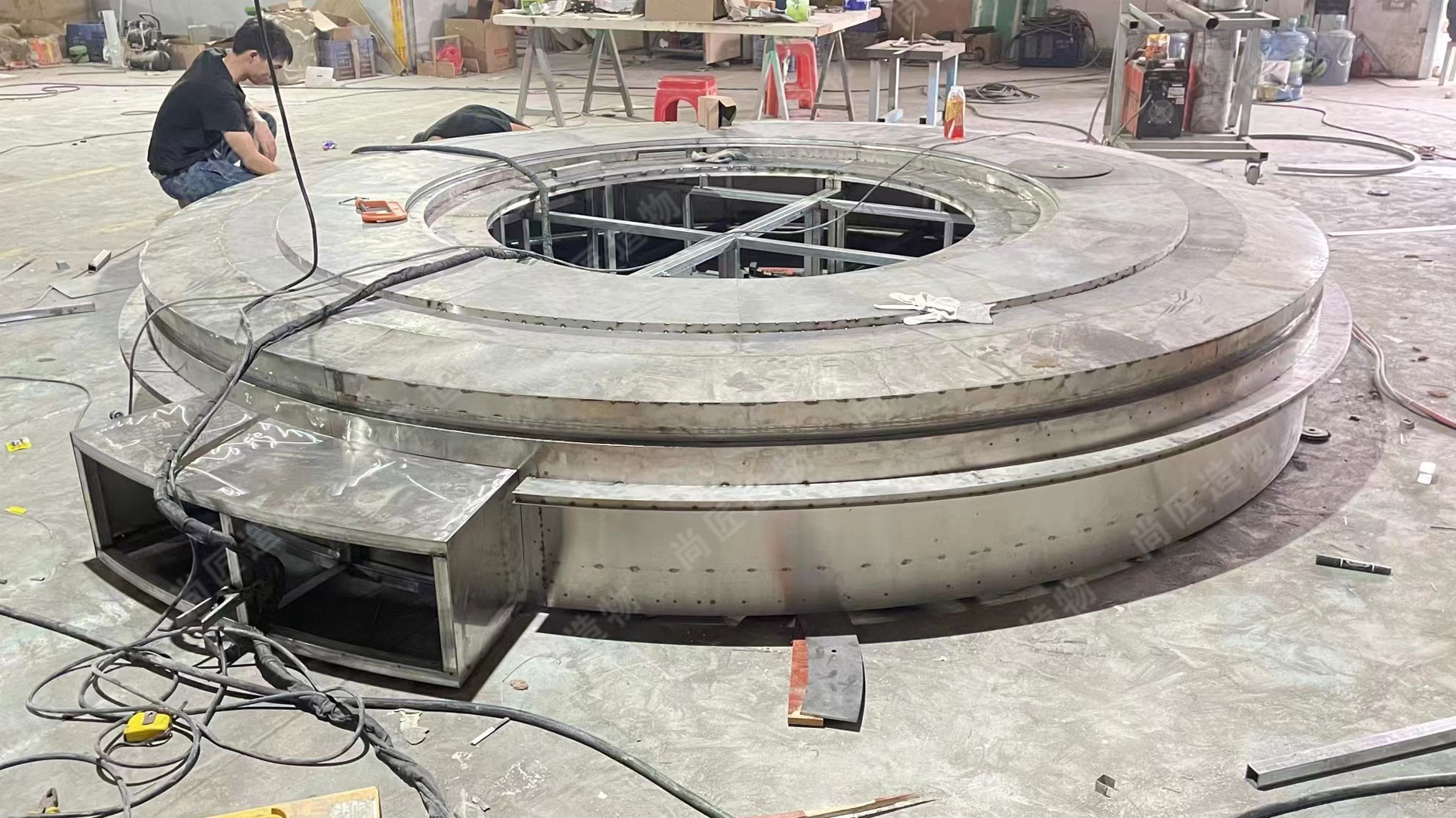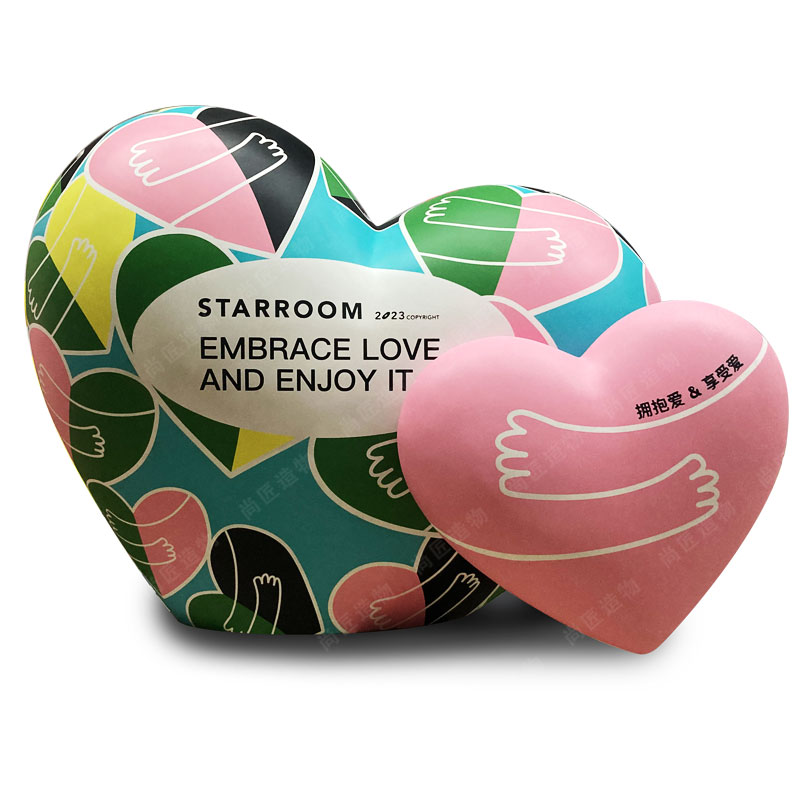Key Takeaways
Kinetic sculpture transforms static art into dynamic experiences by incorporating movement—whether powered by mechanics, wind, or human interaction. These works challenge traditional boundaries, inviting viewers to consider time, space, and energy as artistic elements. Below are essential insights into this evolving art form:
| Aspect | Description | Example Applications |
|---|---|---|
| Movement Source | Uses motors, wind, or manual interaction | Wind-driven mobiles, hand-cranked gears |
| Design Focus | Balances aesthetics with functional engineering | Precision gear systems, fluid pivots |
| Audience Role | Often requires viewer participation to activate motion | Touch-sensitive installations |
"Motion breathes life into form. A sculpture isn’t complete until it moves." — Anonymous kinetic artist
The evolution of kinetic art since 1979 reflects advancements in materials and technology. Early works relied on simple mechanics, while modern pieces integrate sensors and programmable motors. For instance, Cartoon sculpture techniques have inspired playful, interactive designs that merge whimsy with motion.
Tip: To appreciate kinetic sculptures fully, observe how movement alters shapes and shadows over time. Visit exhibitions with varied lighting to see these transformations.
Kinetic races—competitive events where artists test moving sculptures in challenges—highlight the fusion of creativity and engineering. These contests emphasize durability and innovation, pushing creators to solve problems like friction management and energy efficiency. As the field grows, artists continue to explore how motion can deepen emotional connections between art and audience.

Defining Kinetic Sculpture: Motion as Art
Kinetic sculpture transforms static art into dynamic experiences by incorporating movement as a core element. Unlike traditional Realistic sculpture, which focuses on lifelike representation, kinetic works rely on mechanical systems, wind, water, or human interaction to create shifting forms. This art form challenges the notion that visual expression must remain fixed, instead embracing unpredictability and change. For instance, a sculpture might balance delicately on pivots, responding to air currents, or use gears to rotate components in rhythmic patterns.
The concept hinges on blending engineering with aesthetics, where motion becomes both medium and message. Artists often experiment with materials like metal, glass, or recycled objects to achieve fluid transitions between shapes. While some pieces move continuously, others require viewer participation—a push, a touch, or a shift in perspective—to activate their motion. By integrating time and space as variables, kinetic sculptures create evolving narratives, inviting audiences to observe how light, shadow, and structure interact over moments. This interplay between art and motion not only redefines boundaries but also bridges disciplines, laying groundwork for discussions on mechanics and creativity in subsequent sections.
Mechanics Behind Moving Sculptures
The functionality of kinetic sculptures relies on principles of physics and engineering, blending artistic vision with scientific precision. These works often incorporate gears, motors, or natural forces like wind or water to generate motion. For example, rotating components might be balanced using counterweights, while airflow-driven pieces depend on aerodynamics to spin or sway. Materials such as Fiberglass sculpture are favored for their lightweight durability, allowing intricate designs to move smoothly without structural strain.
Mechanical systems vary in complexity. Simple setups may use hand-cranked mechanisms, whereas advanced installations integrate programmable motors or sensors responsive to environmental changes. Artists must calculate torque, friction, and energy transfer to ensure reliable operation, often collaborating with engineers to refine motion patterns. This intersection of disciplines highlights how kinetic art challenges traditional boundaries, transforming static forms into dynamic experiences.
Understanding these mechanics not only clarifies how motion is achieved but also underscores the meticulous planning required to balance aesthetics with functionality. As the art form evolves, innovations in materials and technology continue to expand possibilities for creating ever more sophisticated kinetic works.
Evolution of Kinetic Art Since 1979
The late 20th century marked a turning point for kinetic art, as advancements in materials and technology enabled artists to explore motion in unprecedented ways. Since 1979, the integration of lightweight metals, polymers, and computer-aided design has allowed sculptures to transition from simple wind-driven rotations to intricate mechanized systems. Artists like George Rhoads and Theo Jansen pioneered this era, blending engineering with aesthetics—Jansen’s Strandbeests, for instance, redefined how kinetic sculpture could mimic organic movement using PVC and physics.
Another shift emerged as kinetic art began incorporating electronics, with sensors and programmable motors enabling interactive installations. Museums and public spaces increasingly showcased these works, emphasizing viewer engagement through motion-responsive designs. Meanwhile, competitions such as kinetic races encouraged collaborative creativity, pushing participants to balance artistic vision with technical precision. This period also saw kinetic principles applied beyond galleries—architectural facades, urban installations, and even renewable energy projects adopted dynamic elements. By bridging art and innovation, kinetic sculpture solidified its role as a medium that evolves alongside human ingenuity.

Kinetic Races: Art in Motion Competitions
Kinetic races transform sculptural creativity into dynamic competitions, blending artistry with mechanical innovation. These events challenge participants to design moving sculptures that travel predetermined distances, often through rugged terrain or water, while maintaining aesthetic integrity. Originating from grassroots art communities, kinetic races have grown into organized gatherings like the Kinetic Grand Championship, where teams showcase whimsical, human-powered vehicles doubling as functional stainless steel sculpture or mixed-media artworks.
The races emphasize collaboration between artists, engineers, and performers, prioritizing both visual impact and mechanical durability. Entries often feature intricate gear systems, wind-powered mechanisms, or pedal-driven designs, reflecting the core principles of kinetic art. Judges evaluate entries based on creativity, engineering ingenuity, and audience engagement—criteria that mirror the broader kinetic sculpture movement’s values. While rooted in playful competition, these events highlight how motion amplifies artistic expression, turning transient interactions between material and force into shared public experiences. As kinetic races gain traction globally, they continue to bridge gaps between technical disciplines and fine art, fostering communities that celebrate innovation through motion.

Creative Engineering in Kinetic Design
Kinetic sculpture bridges artistic vision with mechanical precision, requiring designers to solve problems that static art never faces. Engineers and artists collaborate to balance aesthetics with functionality, ensuring moving parts operate smoothly while maintaining structural integrity. This process often involves prototyping materials—like lightweight metals or weather-resistant polymers—to withstand motion and environmental stress. Gears, motors, or natural forces like wind are integrated to create rhythm without compromising the artwork’s visual harmony.
A key challenge lies in translating abstract concepts into tangible motion. For instance, rotating components might mimic planetary orbits, while pendulum-driven pieces echo natural cycles. Modern tools, such as 3D modeling software, allow creators to simulate movements before fabrication, reducing trial-and-error phases. Yet, many artists still value hands-on experimentation, blending traditional craftsmanship with cutting-edge tech.
One notable example is the fusion of narrative and mechanics in IP character sculpture, where engineered motion enhances storytelling. Such works demonstrate how kinetic design isn’t just about movement—it’s about embedding life into materials, turning inert objects into dynamic experiences. By merging creativity with engineering rigor, these sculptures redefine what art can do as much as what it can be.
Iconic Kinetic Sculptures and Their Makers
Kinetic sculpture has produced unforgettable works that blend artistic vision with engineering precision. Alexander Calder, often called the father of modern kinetic art, revolutionized the field with his suspended mobiles in the 1930s. These delicate, wind-powered creations—like Lobster Trap and Fish Tail (1939)—demonstrated how balance and airflow could animate abstract forms. Decades later, George Rickey refined the concept with polished stainless steel sculptures, such as Two Lines Oblique (1969), which twist and shimmer in response to subtle breezes.
The late 20th century saw artists like Theo Jansen push boundaries with Strandbeests, enormous "wind-walking" creatures made from PVC tubing. These biomechanical sculptures, designed to roam beaches autonomously, blur the line between art and survival mechanisms. Meanwhile, Rebecca Horn’s Concert for Anarchy (1990) introduced theatrical motion, featuring a grand piano that violently inverts itself mid-performance. Each artist’s approach—whether Calder’s poetic balance, Rickey’s geometric precision, or Jansen’s biomimetic engineering—reveals how motion transforms static materials into dynamic storytelling tools. Their works continue to inspire contemporary creators exploring robotics, environmental interactivity, and public installations.
How Kinetic Art Engages the Viewer
Kinetic art transforms passive observation into an active dialogue between the viewer and the artwork. Unlike static sculptures, kinetic pieces rely on motion—whether mechanical, wind-powered, or gravity-driven—to create a dynamic experience. This movement invites viewers to pause and observe changes in form, shadow, or sound, fostering a sense of curiosity. For instance, a rotating metal structure might cast shifting patterns of light, while suspended elements swaying in air currents evoke a meditative rhythm.
The unpredictability of kinetic sculptures plays a key role in engagement. A viewer might return to the same piece multiple times, noticing how weather, time, or mechanical variations alter its behavior. This interaction mirrors the unpredictability of life itself, sparking emotional responses ranging from wonder to introspection. Additionally, some kinetic works incorporate interactive elements, such as levers or sensors, allowing audiences to influence the motion directly. Alexander Calder’s mobiles, for example, respond subtly to ambient airflow, encouraging viewers to circle the artwork and discover new perspectives.
By blending visual poetry with engineered motion, kinetic art challenges traditional notions of permanence in art. It turns viewers into participants, asking them to consider not just the object itself but the invisible forces—and human creativity—that bring it to life.

Modern Innovations in Kinetic Sculpture Tech
Recent advancements in kinetic sculpture have expanded the boundaries of how motion interacts with artistic expression. While traditional works relied on gears, weights, or wind, modern creators integrate cutting-edge technologies like programmable motors, solar-powered mechanisms, and responsive sensors. For example, some sculptures now use microcontrollers to synchronize movement with environmental data—such as changes in light, temperature, or even social media activity—transforming static installations into reactive performances. Meanwhile, 3D-printed components allow for intricate, lightweight designs that balance structural precision with fluid motion.
A notable shift involves the use of sustainable energy sources. Artists like [Artist Name] have pioneered wind-powered sculptures with aerodynamic forms that harness natural forces more efficiently, reducing reliance on external power. Additionally, augmented reality (AR) has begun merging digital layers with physical sculptures, enabling viewers to interact with hidden animations or data visualizations through mobile devices. These innovations not only push technical limits but also deepen connections between art, technology, and everyday life—building on kinetic art’s legacy of bridging creativity and engineering.
Conclusion
Kinetic sculpture continues to redefine boundaries between art, engineering, and human perception. As we’ve seen, its evolution from early mechanical experiments to modern tech-driven installations reflects humanity’s enduring fascination with motion as a creative medium. While rooted in principles developed decades ago, the field remains vibrant through innovations like programmable motors, solar-powered systems, and interactive sensors that respond to environmental cues.
This art form challenges creators to balance aesthetic vision with functional design—a dance between form and physics that resonates deeply with audiences. From public installations that transform urban spaces to competitive kinetic races celebrating ingenuity, these works invite viewers to experience art as a dynamic process rather than a static object. As technology advances, kinetic sculpture stands poised to explore new frontiers, merging traditional craftsmanship with cutting-edge tools to keep the conversation between art and motion alive.
Frequently Asked Questions
What exactly defines a kinetic sculpture?
Kinetic sculptures are three-dimensional artworks designed to move, either through mechanical components, natural forces like wind, or viewer interaction. Unlike static art, their purpose lies in blending motion with visual expression.
How do kinetic sculptures move without breaking?
Artists use balanced materials like lightweight metals, bearings, and precision engineering to ensure smooth movement. Some rely on wind or water, while others incorporate motors or gears, requiring careful calibration for durability.
When did kinetic art become mainstream?
While motion in art dates back centuries, the term "kinetic art" gained traction after the 1979 Kinetic Art exhibition in Paris, which showcased how technology could transform traditional sculpture into dynamic experiences.
What are kinetic races?
These competitive events challenge artists and engineers to build moving sculptures that race over land or water. Entries must balance creativity, speed, and structural integrity, turning art into a spectator sport.
Can kinetic sculptures be interactive?
Yes. Many modern pieces invite viewers to push, spin, or even step on components, creating a collaborative relationship between the artwork and its audience.
Who are notable kinetic sculpture creators?
Alexander Calder pioneered mobiles in the 1930s, while Theo Jansen’s Strandbeests—wind-powered "creatures"—showcase how engineering and artistry merge. Their works remain benchmarks in the field.
How has technology influenced kinetic art today?
Advances like solar power, programmable motors, and 3D printing allow for more complex movements and sustainable designs, pushing the boundaries of what kinetic sculptures can achieve.
 ch
ch English
English






